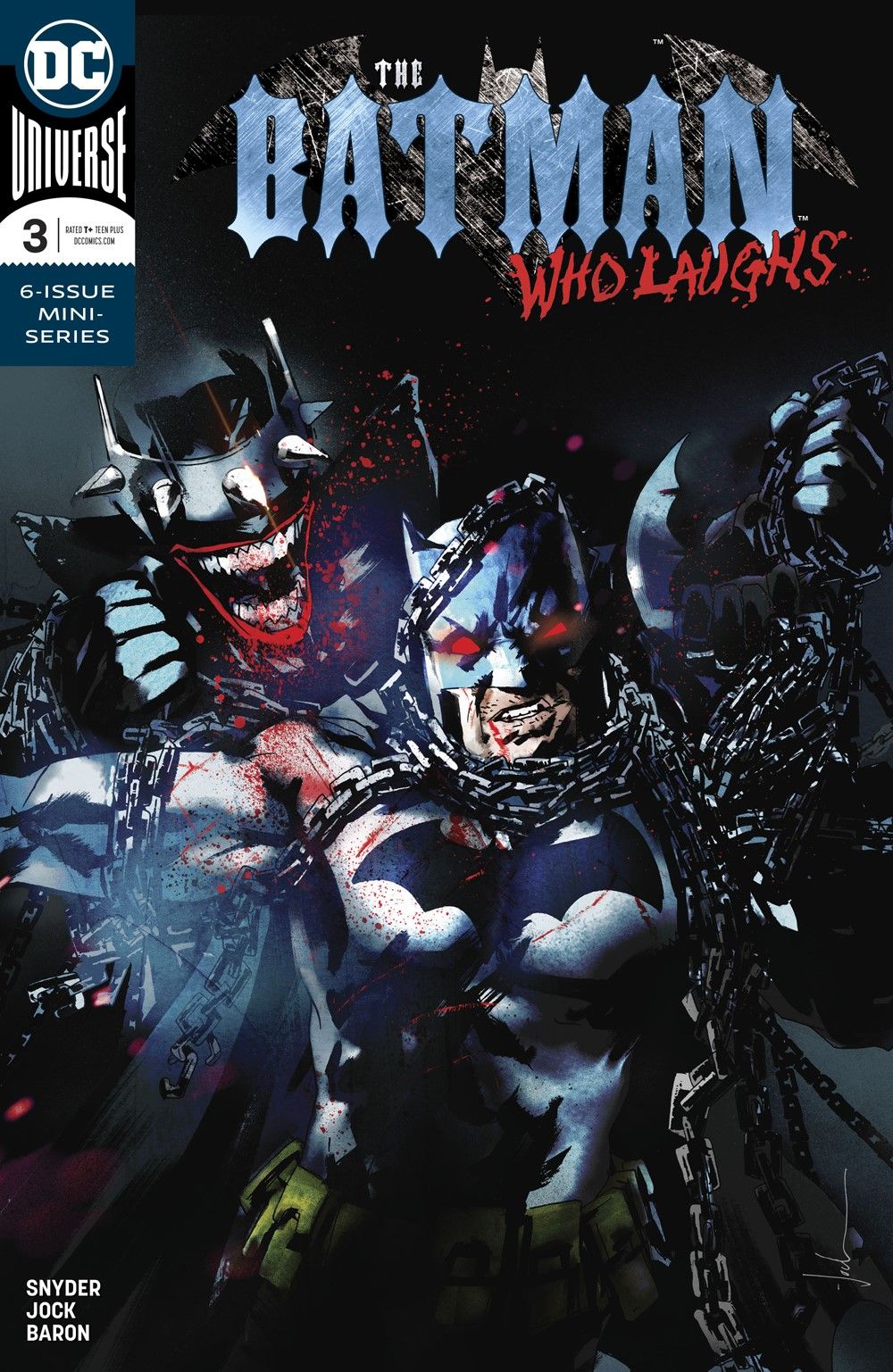So far, The Batman Who Laughs has been a fascinating story pitting the Bruce Wayne of the primary DC Universe against darker versions of himself from alternate realities. These men have all of Bruce’s intellect and strength, his willpower and steel resolve, but they lack the true metric of their power. The titular villain and the Grim Knight do not hold Wayne’s sanctity for human life or his general empathy. This complete and utter disregard for anyone and everything combined with the skills Batman spent years honing, elevates them to levels no other member of Batman’s rogues gallery can truly reach. And the consequences of their existence has been dire, to say the least.
Picking up immediately after the massive cliffhanger from last issue, when Jim Gordon looks for help from his son, James, a psychotic murderer who left quite a mark on Gotham in the pages of Scott Snyder and Jock’s Detective Comics run. Neither Jim Gordon nor Bruce Wayne possess the mind of a killer; they both have had countless run-ins with various men and women who have committed horrendous acts, but more often than not, these crimes have some level of reason. Their acts of violence stem from trauma or revenge or personal gain, but when there’s no reason behind the madness, or the reasoning is so ironclad within their own worldview, how does the world’s greatest detective and his closest ally handle it? Who do they turn to?
RELATED: An Unexpected DC Character is Key To Stopping The Batman Who Laughs
The Batman Who Laughs #3 answers these questions, and while the revelations of this issue are a bit predictable (which is not a slight against it; the logic just tracks), seeing them unfold is horrific. We're at the turning point of this six-issue miniseries, what needs to be done to fight the scourge has been revealed and from here, who knows where things will go. It’s a pretty exciting prospect, even if this issue wasn’t exactly as captivating as the previous two. Scott Snyder is firing on all cylinders, and even in what could be seen a transitional issue, his dialogue is sharp, and moves the story along at a quick clip.
The prologue narration in each issue of this series has been a fantastic framing device which helps set the stage for things to come. It’s clear Snyder is dipping into something personal in his writing, and it bleeds through on the page. The crazed S&M Batman from an alternate dimension and the gun-toting BatPunisher are just window dressing; there's heart to this story, buried under it all, and is continues to bubble up to the surface.
Jock is bringing his A game here (but then again, when doesn't he?). I've been a fan of Jock's work since first being introduced to it in The Losers. He has such a keen eye for defining the visual scope for the stories he's illustrating. Whether it's a sprawling Gotham cityscape enveloping the panel or a simple black backdrop, Jock defines a sense of place, especially when he's working on a Batman title. There is a unique grit to his line work which evokes a sense of wear and tear on his characters. And as these characters move through their story, they're movements remain fluid and cohesive. Jock doesn't rely on obscuring an action sequence to give readers a feeling the action is getting out of control. He's far more surgical and nuanced than that, and it makes for some visually compelling moments.
RELATED: What Is Batman's Problem With Chocolate Ice Cream?
The Batman Who Laughs #3 maintains the quality of the previous issues. While the action moments are not necessarily huge, they are entertaining (especially the brief confrontation between Batman and the Grim Knight). The story pacing is solid, even if this issue has much more more exposition and shifting across the board than in previous issues. It’s hard to say if this comic will live up to Snyder and Jock’s brilliant “Black Mirror” story arc from Detective Comics, but right now, it’s nipping at its heels.

